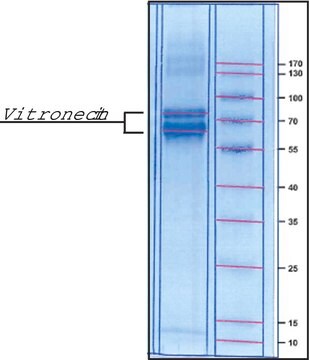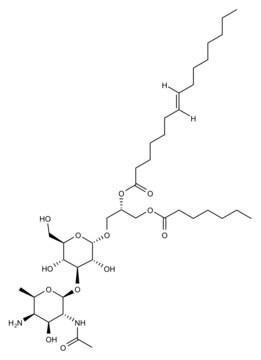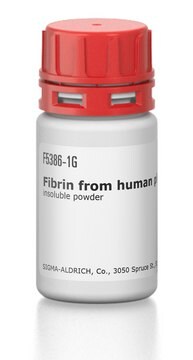V0132
Rat Vitronectin
from rat plasma, powder, suitable for cell culture
Sinônimo(s):
Serum spreading factor
About This Item
Produtos recomendados
Nome do produto
Vitronectin from rat plasma, lyophilized powder, BioReagent, suitable for cell culture
fonte biológica
rat plasma
Nível de qualidade
linha de produto
BioReagent
Formulário
lyophilized powder
peso molecular
75 kDa
embalagem
pkg of 50 μg
técnica(s)
cell culture | mammalian: suitable
cobertura de superfície
0.1 μg/cm2
solubilidade
water: soluble 1.00 mL, clear, colorless
nº de adesão UniProt
Condições de expedição
dry ice
temperatura de armazenamento
2-8°C
Informações sobre genes
rat ... Vtn(29169)
Descrição geral
Aplicação
Ações bioquímicas/fisiológicas
Componentes
Atenção
Nota de preparo
Código de classe de armazenamento
11 - Combustible Solids
Classe de risco de água (WGK)
WGK 3
Ponto de fulgor (°F)
Not applicable
Ponto de fulgor (°C)
Not applicable
Equipamento de proteção individual
Eyeshields, Gloves, type N95 (US)
Escolha uma das versões mais recentes:
Já possui este produto?
Encontre a documentação dos produtos que você adquiriu recentemente na biblioteca de documentos.
Artigos
3D cell culture overview. Learn about 2D vs 3D cell culture, advantages of 3D cell culture, and techniques available to develop 3D cell models
Cancer stem cell media, spheroid plates and cancer stem cell markers to culture and characterize CSC populations.
Extracellular matrix proteins such as laminin, collagen, and fibronectin can be used as cell attachment substrates in cell culture.
Nossa equipe de cientistas tem experiência em todas as áreas de pesquisa, incluindo Life Sciences, ciência de materiais, síntese química, cromatografia, química analítica e muitas outras.
Entre em contato com a assistência técnica






